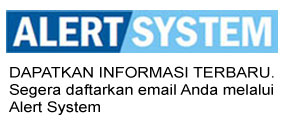| Website ini akan update setiap Selasa pagi. Nantikan Informasi terbaru setiap minggunya. | |||
| Peran Direktur Medis: Sebagai Tuan atau Pelayan?
Metode ABC untuk menghitung Unit Cost Pelayanan di RS
+ Arsip Pengantar Minggu Lalu |
|||
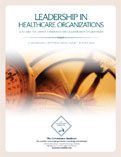 |
Leadership in Healthcare Organization |  |
Pembentukan ikatan konsultan manajemen RS |
Infection prevention campaign aims to curb the spread of avoidable infections among those who are hospitalized
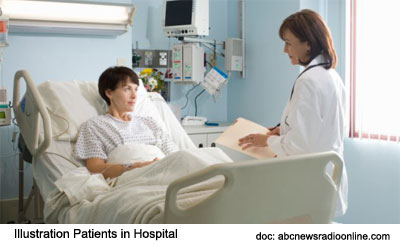 (dailyRx News) It’s not uncommon for hospitalized patients to have weakened immune systems that aren’t able to fight off infections. And that can make a hospital stay a risk to sick people.
(dailyRx News) It’s not uncommon for hospitalized patients to have weakened immune systems that aren’t able to fight off infections. And that can make a hospital stay a risk to sick people.
Helping to stop the spread of infectious illness in healthcare facilities is the reason behind International Infection Prevention Week — which runs October 20 through 26.
“Cleanliness protects against hospital infections.”
Laura Buford, RN, BSN, CIC, told dailyRX News that just about everyone who comes in contact with a hospitalized patient can play a role in protecting that ailing person from avoidable diseases spread by human contact.
“Healthcare personnel, patients and even families,” said Buford, listing those key players in infection prevention.
“Each year, nearly 100,000 lives are lost due to preventable healthcare-associated infections. This is a tragedy. [We] want to raise awareness of the issue and empower everyone on how they can help to reduce this number.”
Reducing the tally of infectious illnesses isn’t that hard, added Buford, who works in infection prevention at St. David’s South Austin Medical Center in Austin, Texas.
“So often, people forget about the basics. They forget about washing their hands. They forget about covering their cough,” said Buford, also a member of the Association of Professionals in Infection Control and Epidemiology (APIC). “They forget about simple cleaning. Infection prevention doesn’t have to be complicated. It truly is about doing easy things, and the results of those save lives.”
Beyond this specially designated awareness week, there are ongoing efforts to curb hospital-borne infections. APIC’s “Infection Prevention and You” campaign, in part, encourages patients themselves to champion their own safety against hospital infections. They include:
Asking whether to bathe with germ-killing soap prior to surgery
Taking all medications as directed
Ensuring that needled syringes are sterile, only used once and then properly disposed of
Requesting that an untidy room be cleaned
Asking daily whether it’s time for removal of a catheter, which can result in urinary tract infections
Also, according to APIC, patients and others should sneeze into their elbows instead of their hands, which touch other people and objects.
Those at highest risk for becoming infected or having the hardest time bouncing back from infectious disease include the very young, very old, and individuals whose immune systems are consistently weak, Buford said.
With flu season looming — and avoidance of the flu on many people’s minds — those groups that are especially at risk deserve added attention and protection, Buford said. Those three at-risk groups should have limited contact with carriers of the flu or, for that matter, all other infections.
Special care should be given to the cleanliness and safety of their food. Everyone who comes into contact with those vulnerable populations should wash their hands. And, Buford added, “Don’t visit if you are sick.”
People who have been sick should also be mindful that they can be “…re-infected,” Buford said, “or, at least prolong your illness, if you don’t wash your hands [regularly].”
Source: dailyrx.com
Lander Regional and Riverton Memorial Hospitals recognized for quality care
 (Fremont County, Wyo.) – For the second consecutive year, Lander Regional and Riverton Memorial Hospitals were presented with a hospital quality award from Mountain-Pacific Quality Health during the Wyoming Hospital Association convention in Sheridan in September.
(Fremont County, Wyo.) – For the second consecutive year, Lander Regional and Riverton Memorial Hospitals were presented with a hospital quality award from Mountain-Pacific Quality Health during the Wyoming Hospital Association convention in Sheridan in September.
Both hospitals were awarded the Commitment to Quality Award for their outstanding performance in giving excellent care in the nationally measured areas of heart failure, pneumonia, acute myocardial infarction, infections prevention and surgical complications. The award also recognizes the hospitals’ strong leadership support for quality and patient safety.
“I’m extremely proud of the quality of care we provide in both Fremont County hospitals,” Steve Erixon, CEO for Lander Regional Hospital and Riverton Memorial Hospital, said. “Quality and patient safety are at the forefront of our operations each day, and it’s nice to be recognized for our efforts.”
This is the 11th year Mountain-Pacific has presented Wyoming medical facilities with Hospital Quality Awards.
Source: county10.com
Rp 80 Miliar Tambahan untuk RSUP
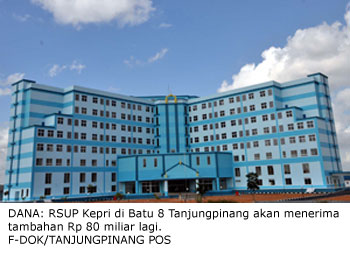 Dianggarkan di APBD 2014 dalam Bentuk Multiyears
Dianggarkan di APBD 2014 dalam Bentuk Multiyears
SELAIN penganggaran lanjutan proyek Jembatan 1 Dompak di Anggaran Pendapatan Belanja daerah (APBD) 2014 mendatang. Pemerintah Provinsi (Pemprov) Kepri dan Dewan Perwakilan Rakyat Daerah (DPRD) juga akan menganggarkan sekitar Rp80 miliar untuk melanjutkan penyelesaian Rumah Sakit Umum Provinsi (RSUP) Batu 8 Tanjungpinang.
“Direncanakan sistem proyeknya juga dalam bentuk multiyears atau tahun jamak,” ungkap Wakil Ketua DPRD Kepri Ing Iskandarsyah kepada Tanjungpinang Pos, Minggu (13/10) kemarin.
Iskandar mengatakan, salah satu alasan kenapa dibuat multiyears meskipun anggarannya tidak sebesar penyelesaian Jemabtan 1, sebab dikhawatirkan kondisi waktu penyelesaian dan kemampuan anggaran menjadi kendala ketika nanti dibuat proyek tahun berjalan. Untuk itu, salah satu komitmen bersama pemerintah dan dewan adalah menyelesaikan empat lantai (lantai 5,6,7 dan 8) RSUP itu secepat mungkin.
“Kalau tahun berjalan lelangnya pasti dua kali, dan ini prosesnya menyita waktu yang tidak sedikit. Untuk itu lebih bagus dalam bentuk tahun jamak, supaya dalam dua tahun kedepan bisa selesai,” ujarnya.
Iskandar mengungkapkan, sebenarnya awal tahun 2012 lalu pihaknya sempat melobi pemerintah pusat supaya ada APBN yang dikucurkan untuk penyelesaian RSUP tersebut. Berhubung ini kategori proyek lanjutan, maka sumber pendanaannya tetap APBD dan tidak bisa dari APBN pusat.
“Target kami pertengahan tahun 2015 RSUP ini sudah selesai keseluruhan dan bisa dipergunakan untuk seluruh masyarakat Kepri, khususnya yang ada di Pulau Bintan,” imbuhnya.
Menurut Iskandar, secara prinsip para anggota DPRD Kepri juga tidak ada yang keberatan dengan penyelesaian RSUP tersebut. Apalagi Pemda juga berpendapat, bahwa sudah saatnya ada rumah sakit milik pemerintah yang bertipe B dengan fasilitas ruangan yang sangat baik. (fik)
Sumber: tanjungpinangpos.co.id
Peran Direktur Medis: sebagai Tuan atau Pelayan?
Peran Direktur Medis: sebagai Tuan atau Pelayan?
Artikel oleh Antonie Kossaify, Boris Rasputin, Jean Claude Lahoud
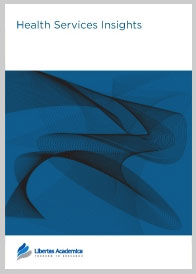 Artikel yang diterbitkan oleh Health Services Insight pada Juni 2013 ini sengaja menggunakan judul yang provokatif, yang ternyata memang menjadi isu besar di RS swasta pada berbagai negara, bukan hanya di Indonesia. Fakta bahwa Direktur Utama RS seringkali merupakan owner RS itu sendiri menempatkan pengelola RS lainnya yang bukan owner sebagai “pengisi posisi pada struktur organisasi”, eksekutor, bahkan hanya untuk sekedar memenuhi standar perijinan atau akreditasi, bukan orang yang ditunjuk untuk menjadi decision maker, apalagi policy maker.
Artikel yang diterbitkan oleh Health Services Insight pada Juni 2013 ini sengaja menggunakan judul yang provokatif, yang ternyata memang menjadi isu besar di RS swasta pada berbagai negara, bukan hanya di Indonesia. Fakta bahwa Direktur Utama RS seringkali merupakan owner RS itu sendiri menempatkan pengelola RS lainnya yang bukan owner sebagai “pengisi posisi pada struktur organisasi”, eksekutor, bahkan hanya untuk sekedar memenuhi standar perijinan atau akreditasi, bukan orang yang ditunjuk untuk menjadi decision maker, apalagi policy maker.
Tulisan ini dilatarbelakang oleh suatu kondisi dimana peran negara terhadap pengaturan institusi pelayanan kesehatan swasta sangat kecil, sehingga pemerintah lokal yang lebih banyak mewarnai regulasi yang berlaku. Oleh karena itu, Direktur Utama dan Direktur Medis sama-sama memiliki peran untuk melaksanakan regulasi tersebut dan untuk itu harus saling berkolaborasi agar organisasinya menjadi efisien.
Tentu saja semua sependapat bahwa profesionalisme dalam pelayanan kesehatan adalah hal yang tidak dapat dikompromikan, karena terkait dengan masalah hidup dan mati. Profesionalisme ini juga mencakup skill yang harus dimiliki oleh para pimpinan rumah sakit (direksi). Ada banyak value yang perlu diproses dan dikultivasi oleh seorang Direktur Medis untuk menghasilkan kinerja rumah sakit yang baik secara keseluruhan. Dari penelusuran berbagai literature yang dilakukan oleh para penulis artikel ini, setidaknya ada 50 tulisan yang relevan dan kemudian direview untuk mengetahui fungsi dan peran Direktur Medis di institusi pelayanan kesehatan.
Secara teori seorang Direktur Medis direkrut berdasarkan kompetensinya (dalam hal mengelola dan memimpin, selain juga kompetensi teknis). Namun kenyataannya hal tersebut tidak selalu terjadi. Pada lingkungan dimana owner sekaligus sebagai Direktur Utama sehingga perannya sangat dominan, Direktur Medis seringkali berada pada posisi “menjalankan arahan” Dirut. Skenario ini tidak selalu bisa menjamin bahwa Direktur Medis yang qualified dapat bekerjasama dengan Dirut dan menjadi “actor” yang paling berpengaruh diantara seluruh pejabar struktural. Yang terjadi adalah sebaliknya, dimana peran Direktur Medis bergeser dari menjalankan tugasnya menjadi memenuhi keinginan Dirut.
Profil Posisi dan Deskripsi Pekerjaan Direktur Medis
Dari puluhan artikel yang direview, tugas Direktur Medis ada yang sifatnya umum dan ada yang spesifik. Tanpa membaca artikel ini, banyak kalangan yang meyakini bahwa tigas Direktur Medis “hanya” meliputi hal-hal yang terkait langsung dengan pelayanan medis dan personnel yang melakukan pelayanan medis. Sebenarnya tugas umumnya jauh lebih luas dari itu. Berikut ini adalah daftar tugas umum seorang Direktur Medis:
- Memastikan bahwa lingkungan kerja kondusif bagi para profesional kesehatan, khususnya para dokter, dalam melakukan tugas-tugas profesinya.
- Bertanggung jawab untuk mengembangkan dan memperbaiki kebijakan, , protokol dan prosedur dasar yang merefleksikan konstitusi lembaga
- Mensupervisi langsung atau menunjuk komisi medis yang akan dilibatkan dalam memfungsikan lembaga
- Secara teoritis, direktur medis bertanggung jawab terhadap setiap proses yang bisa mempengaruhi kualitas pelayanan secara langsung maupun tidak langsung
- Membangun kerjasama antara departemen medis, dokter, para medis dan staf lainnya
- Harus selalu ada dan mampu mengevaluasi setiap disfungsi akut di setiap unit pelayanan dalm waktu yang sesingkat-singkatnya
- Harus mmapu menajdi panutan bagi stafnya, mengkultivasi dan mempromosikan semangat saling percaya dan profesionalisme
- harus memiliki pemikiran tiga dimensi yang luas, berpikir global degan aksi lokal dalam rangka meningkatkan praktek-praktek medis bahkan dalam kondisi dimana instrumen yang dibutuhkan tidak selalu tersedia
RS, sekecil apapun, harus tetap mengikuti perkembangkan keilmuan dan teknologi kedokteran, agar dapat memberikan pelayanan berbasis bukti yang selalu ter-up-date. Seorang Direktur Medis berperilaku evolusioner untuk mendorong terjadinya peningkatan kapasitas SDM berkelanjutan, dan ini merupakan isu kunci bagi efisiensi di rumah sakit.
Pada akhir tulisan ini, Kossafy dkk menyimpulkan bahwa tugas seorang Direktur Medis bukan saja terbatas pada peran medis melainkan juga pada fungsi-fungsi manajerial. BIsa jadi ada overlap beberapa fungsi dengan Direktur Keperawatan. Hubungan antara CEO /Dirut dengan Direktur Medis merupakan kunci keberhasilan sebuah RS, dan keberhasilan hubungan ini merupakan tanggung jawab dari kedua belah pihak.
Lebih lanjut para penulis menekankan bahwa isu-isu keuangan tidak boleh menghambat atau menyebabkan keterlambatan pelayanan medis, khususnya saat pasien dalam kondisi kritis. Sebagai tambahan, Direktur Medis bertanggung jawab untuk menghindarkan para tenaga medis dalam mendapatkan masalah malpraktik dan oleh karenanya harus ada asuransi malpraktik yang melindungi mereka. Seorang Direktur medis juga harus merupakan pemecah masalah yang kuat dan analis situasi yang kritis, serta harus memiliki kemampuan komunikasi, kepemimpinan klinis. Singkatnya, Direktur Medis harus mampu menjadi “tuan” dalam kemampuan manajerialnya, sejalan dengan Direktur Utama tanpa harus menjadi “pelayan” namun melayani kepentingan dan misi institusi.
Jika anda tertarik untuk membaca artikel lengkapnya, anda bisa mengikuti link berikut ini: http://www.la-press.com/the-function-of-a-medical-director-in-healthcare-institutions-a-master-article-a3918. (pea)
Controversial Liverpool Care Pathway is of little benefit for dying patients, major study finds
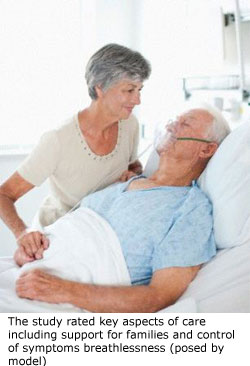 The controversial Liverpool Care Pathway has little clinical benefit for dying patients, according to a major new trial.
The controversial Liverpool Care Pathway has little clinical benefit for dying patients, according to a major new trial.
Based on findings published in The Lancet, the researchers suggest that any initiative to replace the Liverpool Care Pathway (LCP) in England should be ‘grounded in scientific evidence’ and tested in controlled trials before it is implemented.
The LCP was jointly developed by the Marie Curie Hospice Liverpool and the Royal Liverpool University Hospital in the late 1990s with the aim of rolling out the best practice of hospices to hospitals, to provide uniform, high-quality, dignified care for dying patients in the last days or hours of life.
However, its effectiveness for improving care for the dying has not been assessed in a randomised trial until now.
In the study, The Liverpool Care Pathway Italian Cluster Trial Study Group assessed the impact of the Italian version of the LCP (LCP-I) on the quality of care of adult patients dying with cancer and their families in 16 general medicine hospital wards across Italy.
Wards and palliative care teams chosen at random, were trained in the LCP-I programme or to follow standard healthcare practice.
Bereaved family members of cancer patients were interviewed within four months of their relative’s death, and the quality of end-of-life care assessed using a scale of 0 to 100.
They rated key aspects of care including information and decision-making, co-ordination of care, support for families, and control of symptoms such as pain and breathlessness.
No significant differences in the overall quality of care between the wards in which the LCP-I was implemented and the control wards was noted.
And two dimensions assessed – respect, dignity, and kindness and control of breathlessness – also showed some improvement in the LCP-I wards.
However, no differences in survival times between patients in LCP-I and control wards were noted.
Study leader Dr Massimo Costantini said: ‘Although we found no significant difference in overall quality of care for those on the LCP-I ward, we did see a small improvement.
This could indicate that the LCP-I may have the potential to close the gap between hospice care and hospital care as we know families rate quality of hospice care more highly.
While the results of this trial should be interpreted with caution because there were slightly fewer participants than expected, and we observed some variability in implementation of the LCP between the hospitals, this is a robust trial and the findings should be used to inform strategies to care for dying patients.
‘There could be fundamental components of the LCP that might be beneficial, and the next steps are to establish this.’
Professor Irene Higginson, co-author of the study and Director of the Cicely Saunders Institute at King’s College London, said: ‘Our findings demonstrate just how important it is for any initiative that replaces the LCP in England to be grounded in scientific evidence and tested in controlled trials before being rolled out across the board.
‘We must face this challenge head-on and ensure scientific evidence forms the foundations for any new initiative if end-of-life care is to be genuinely improved for patients and their families in England.’
Commenting on the findings, David Currow, of Flinders University in Australia, and Amy Abernethy, from Duke Clinical Research Institute in the USA, said: ‘Across healthcare there is a need to improve care for people who are dying, which has led to widespread uptake of the Liverpool Care Pathway before adequate assessment.
‘A decade after widespread uptake, the results of this, the only adequately powered study of LCP so far have not shown clinically meaningful differences for patients – the ultimate measure of useful health policy.’
Source: dailymail.co.uk
Obamacare transforming how local hospitals care for patients
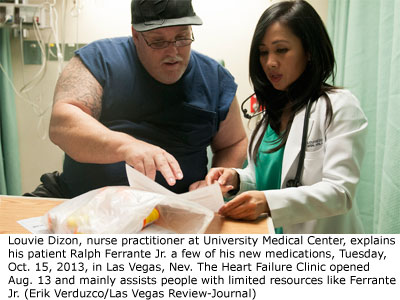
LAS VEGAS REVIEW-JOURNAL
Obamacare has changed the way you shop for insurance.
But long before you had to sift through new plans, the law was transforming how local hospitals care for patients.
Obamacare has new rules designed to curb 30-day hospital readmissions. Medical centers that fail to measure up pay the price: The Centers for Medicare and Medicaid Services cut their reimbursements by up to 1 percent in 2013, and will trim them as much as 2 percent in 2014 and 3 percent in 2015 and beyond.
Some experts say the regulations have their downside, penalizing hospitals for the poor overall health of seriously ill patients. That hasn’t stopped hospital systems across Southern Nevada from launching tools and procedures to slash readmissions. Figures show some of those efforts have paid off, though many local hospitals have a ways to go to avoid those penalties.
Start with how hospitals are limiting readmissions.
Valley Health System has rolled out software that automatically controls insulin levels to slash infection risks among patients in its five local hospitals. Diabetic or not, patients with high blood sugar are likelier to have post-operative infections, and low blood sugar could kill a patient. The new system, called Endotool, automatically times blood-sugar tests and reminds nurses to check glucose levels. It also tells nurses to change the rate of intravenous insulin drips when necessary. It practically eliminates human error, said Sharon Sanchez, a registered nurse in the Diabetes Treatment Center at Desert Springs Hospital.
There are administrative changes as well.
Multidisciplinary rounds now bring together Valley Health nurses, case managers, pharmacists and physical therapists to determine readmission risk. For patients who go home on more than seven medications, pharmacists work with primary-care providers to cut harmful drug interactions. A patient with two or more serious, chronic conditions — say, heart failure and cancer — is considered higher-risk, as are patients on medications that tend to cause readmissions. For patients at moderate to high risk of readmission, Valley Health works on setting up home health care.
High-risk patients at University Medical Center benefit from a “robust” hospitalist program, said Chief Nursing Officer Vicki Huber. Hospitalists are doctors who help patients maneuver the medical system. At UMC, they serve as primary-care providers for patients who don’t have a regular doctor, and they follow up to make sure patients take medications and eat properly.
UMC also just opened its Congestive Heart Failure Clinic, a nurse practitioner-run center where patients learn to manage heart disease through medication, weight loss and proper diet. Plus, the hospital is developing a pilot program with ambulance companies to provide preventive care for patients who frequently call for a lift to the ER.
And both Valley Health and UMC also now check up on patients by phone within three days, arrange follow-up appointments within a week and enroll patients in community networks that call patients to follow up on how they’re doing every day for a month.
HCA Healthcare didn’t offer details on what it’s doing to reduce readmissions, but company officials said in a statement that they’re “dedicated to providing our patients with the highest-quality care” at Sunrise Hospital, Sunrise Children’s Hospital, MountainView Hospital and Southern Hills Hospital.
“From discharge planning and education to bedside delivery of medications, our facilities have a number of initiatives in place to keep our patients from requiring additional care,” the statement said. “We also work closely with the primary care physicians and specialists in our community to ensure that patients are following up with their physician post-discharge.”
The measures do require financial investments: Valley Health had to contract with a vendor to make patient follow-up calls, and UMC has had to hire hospitalists and nurse practitioners. But officials say the costs make sense. Huber said it’s more expensive to readmit patients than to follow up with them. Valley Health’s Endotool has already paid for itself, Sanchez said, though the company declined to say what it paid for the software.
Nadine Atkinson, Valley Health’s director of case management, said the hospital’s efforts haven’t added to costs patients pay. Rather, they’re “an added benefit.”
“It’s a cost we incur, but in the end, we want to do the right thing,” Atkinson said. “We want to make sure patients get what they need the first time out, and make sure they have resources if they get out into the community and feel like they’re failing.”
Some metrics show the changes have made a difference. UMC, for example, ranks in the top 25 percent among the 119 members of the University Healthcare Consortium for its low percentage of 30-day readmissions. Since its heart clinic opened in August, the hospital has had just one congestive heart-failure patient out of 65 get readmitted. That’s well below an average 30-day readmission rate of 24.7 percent in 2010, the latest year with available statistics, according to the U.S. Department of Health and Human Services.
Valley Health officials credit their Endotool system with eliminating chest-wound infections in heart patients and cutting hypoglycemic incidents from 3 percent to 0.5 percent at Desert Springs.
An August report from Kaiser Health News showed mixed trends in hospital readmission penalties.
Only one local acute-care hospital — St. Rose Dominican’s Siena campus — faces no readmission-driven payment cut in 2013. For the rest, reimbursement cuts range from a low of 0.04 percent at Summerlin Hospital to the maximum 1 percent at Valley Hospital.
But six local hospitals — Desert Springs, MountainView, Spring Valley, Valley, and St. Rose Dominican’s De Lima and San Martin campuses — curtailed readmissions enough to reduce payment cuts in 2014.
Overall, Nevada ranked No. 11 for its share of hospitals penalized, at 79 percent. It ranked in the middle of the pack, at No. 24, for its average payment penalty. No local hospital will see a pay cut anywhere near the 2 percent maximum in 2014, Kaiser’s report said.
Still, despite any progress, the new rules can be tough to comply with, according to a report from Harvard researchers. Their May analysis in the Wall Street Journal showed that most readmissions are unavoidable, because the typical hospital patient already faces life-threatening complications. Plus, smaller, financially struggling hospitals may not have the money to improve equipment and processes. And the Kaiser report said hospitals that treat a lot of low-income patients are likelier to have trouble cutting readmissions.
Joyce Malaskovitz, director of health and wellness and a nurse at Desert Springs, said she appreciated Obamacare’s emphasis on stopping readmissions, but she added the rules aren’t easy to meet in a town with an aging population that has complex needs.
“People with diabetes don’t just have diabetes. They usually have diseases related to kidneys and the heart, and they may have had strokes. They may have hypertension, and they may be obese,” she said. “When you start putting all of those together, especially in an older patient, they are going to come back to the hospital more frequently. You can try to prevent it, but age is against you.”
Contact reporter Jennifer Robison at [email protected]. Follow @J_Robison1 on Twitter.
Local hospitals show mixed results in their efforts to cut readmission rates, though no hospital will pay anything approaching the 2 percent maximum payment penalty in 2014:
Hospital|2013 Penalty|2014 Penalty
Centennial Hills|0.15%|0.3%
Desert Springs|0.74%|0.55%
MountainView|0.8%|0.35%
St. Rose Dominican-De Lima|0.95%|0.65%
St. Rose Dominican-San Martin|0.41%|0.24%
St. Rose Dominican-Siena|0.0%|0.04%
Southern Hills|0.12%|0.32%
Spring Valley|0.39%|0.30%
Summerlin|0.04%|0.09%
Sunrise|0.31%|0.40%
UMC|0.08%|0.1%
Valley|1%|0.89%
Source: Kaiser Health News ; reviewjournal.com
Pasien Indonesia Pilih Berobat ke Luar Negeri
 SLEMAN (KRjogja.com) – Pelayanan kurang maksimal yang diberikan rumah sakit kepada pasien, membuat para pasein di Indonesia memilih berobat ke luar negeri. Untuk mencegah banyaknya pasien Indonesia berobat ke luar negeri, rumah sakit perlu meningkatkan Sumber Daya Manusia (SDM) dan pelayanan.
SLEMAN (KRjogja.com) – Pelayanan kurang maksimal yang diberikan rumah sakit kepada pasien, membuat para pasein di Indonesia memilih berobat ke luar negeri. Untuk mencegah banyaknya pasien Indonesia berobat ke luar negeri, rumah sakit perlu meningkatkan Sumber Daya Manusia (SDM) dan pelayanan.
“Orang Indonesia lebih suka ke luar negeri untuk berobat, karena sistem pelayanan di luar negeri lebih cepat, tidak terlalu lama menunggu. Ini perlu perbaikan bagi pelayanan di rumah sakit yang ada di Indonesia,” kata Kepala Rumah Sakit Pusat Angkatan Udara dr S Hardjolukito Marsekal Pertama TNI dr Benny H Tumbelaka SpOt MHKes SpKp Mars, Rabu (16/10/2013) saat melakukan penandatanganan kerja sama dengan Fakultas Kedokteran UGM dan RSUP dr Sardjito.
Menurutnya, kerja sama ini sebagai bentuk untuk peningkatan dan pengembangan mutu pelayanan rumah sakit. Di samping itu, untuk peningkatakan pengalaman dan ketrampilan peserta program pendidikan fakultas kedokteran UGM dan RSUP Sardjito.
“Sekarang ini pertumbuhan rumah sakit semakin banyak dan masyarakat semakin kritis. Agar rumah sakit kami tetap eksis dalam melayani pelanggan, kami harus memiliki SDM yang berkualitas. Makanya kami melakukan kerja sama dengan Fakultas Kedokteran UGM dan Sardjito,” terangnya.
Dikatakan, kerja sama ini sudah kesekian kalinya, karena dari hasil kredensial yang dilakukan, RSPAU sudah memenuhi syarat legalitas, SDM yang kompeten dan profesional, pelayanan yang terakreditasi.
“Fasilitas yang kami miliki, baik medis maupun menunjang medis sudah memenuhi standar yang telah ditetapkan Kemenkes RI. Namun kami tetap harus meningkatkan,” ujarnya. (Sni)
Sumber: krjogja.com
Hadirnya KJS Tingkatkan Animo Warga ke Puskesmas dan Rumah Sakit
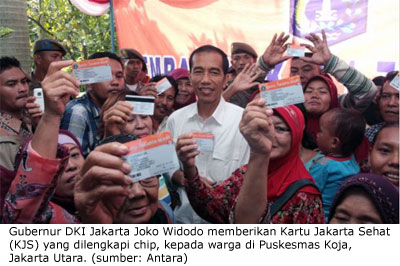 Jakarta – Penerapan Kartu Jakarta Sehat (KJS) dinilai mampu tingkatkan animo warga untuk berobat ke Puskesmas dan Rumah Sakit. Masyarakat Jakarta kini tak perlu khawatir lagi ke rumah sakit karena Pemprov DKI menjamin kesehatan masyarakat.
Jakarta – Penerapan Kartu Jakarta Sehat (KJS) dinilai mampu tingkatkan animo warga untuk berobat ke Puskesmas dan Rumah Sakit. Masyarakat Jakarta kini tak perlu khawatir lagi ke rumah sakit karena Pemprov DKI menjamin kesehatan masyarakat.
“Penerapan KJS mampu mendorong masyarakat untuk tidak lagi menahan rasa sakit di rumah seperti yang selama ini terjadi. Masyarakat kini sakit kepala saja sudah pergi ke Puskesmas. Ini adalah sesuatu yang baik,” ujar anggota Komisi E (bidang Kesejahteraan Rakyat) DPRD DKI Jakarta Jhony Simanjuntak kepada Beritasatu di Jakarta, Rabu (16/10).
Menurut politisi PDI-P itu, penerapan KJS yang telah diterapkan sejak gubernur dan wakil gubernur Jokowi-Basuki memimpin Jakarta telah berjalan baik. Hal itu dapat terlihat dari semakin banyaknya warga berobat ke Puskesmas dan RSUD setiap harinya.
“Memang pakai KTP DKI saja datang ke Puskesmas ataupun ke rumah sakit pasti dilayani. Namun, alangkah baiknya kalau semua warga memiliki kartu KJS ini. Biar cepat proses administrasinya saat masuk rumah sakit,” katanya.
Ke depan, Jhony mendorong rumah sakit swasta memperbanyak ruangan kelas tiga untuk menampung pasien KJS. Sementara rumah sakit milik Pemprov DKI harus terus ditingkatkan berupa pembangunan RSUD Jakarta Selatan dan penambahan ruangan untuk kelas tiga.
Selain itu menambah alat-alat kesehatan di RSUD untuk mempercepat pelayanan. Juga, meningkatkan sumber daya manusia di Puskesmas dan RSUD agar profesional melayani warga Jakarta.
Sumber: beritasatu.com
Rumah Sakit Harjolukito Jadi Rumah Sakit Pendidikan
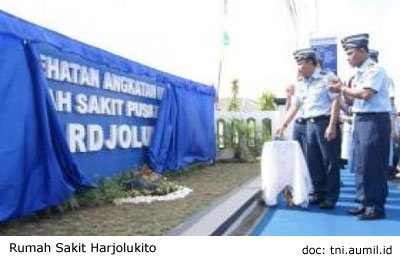 REPUBLIKA.CO.ID, YOGYAKARTA — Rumah Sakit Pusat Angkatan Udara (RSPAU) Dr Suhardi Hardjolukito bekerjasama dengan Fakultas Kedokteran Universitas Gadjah Mada (FK UGM) dan Rumah Sakit DR Sardjito untuk menjadi rumah sakit pendidikan. Ke depan, mahasiswa-mahasiswa FK UGM akan melakukan co assistent di RSPAU.
REPUBLIKA.CO.ID, YOGYAKARTA — Rumah Sakit Pusat Angkatan Udara (RSPAU) Dr Suhardi Hardjolukito bekerjasama dengan Fakultas Kedokteran Universitas Gadjah Mada (FK UGM) dan Rumah Sakit DR Sardjito untuk menjadi rumah sakit pendidikan. Ke depan, mahasiswa-mahasiswa FK UGM akan melakukan co assistent di RSPAU.
“Kerja sama ini diharapkan dapat meningkatkan kualitas proses pelayanan kesehatan, penelitian dan pengabdian kepada masyarakat,” kata Kepala RSPAU Dr Suhardi Hardjolukito, Marsma TNI Benny H Tumbelaka di Yogyakarta, Rabu (16/10).
Lebih lanjut Benny mengatakan kerja sama ini sekaligus membuktikan kepedulian dan kontribusi RSPAU dr Hardjolukito, FK UGM, dan RSUP DR Sardjito terhadap pendidikan tenaga medis di Indonesia.
Kerja sama ini merupakan kerjasama yang kesekian kalinya, karena hasil kredensial yang telah dilakukan sudah memenuhi syarat legalitas, sumber daya manusia yang kompeten dan profesional, mutu pelayanan yang terakreditasi.
“Juga fasilitas baik medis maupun penunjang medis yang memenuhi standar yang telah ditetapkan Kementerian Kesehatan RI,” kata Benny.
Rumah sakit, kata Benny, saat ini semakin diminati masyarakat. Namun di satu sisi, kedudukan masyarakat lebih kuat dan banyak pilihan rumah sakit yang dapat melayaninya. Sehingga masyarakat akan memilih rumah sakit yang bisa memberikan pelayanan yang memuaskannya.
Untuk bisa memberikan pelayanan prima, lanjut Benny, rumah sakit tidak bisa bekerja sendiri-sendiri. Karena itu perlu kerja sama dengan rumah sakit yang lebih bagus pelayanannya.
“Hari ini kami sangat berbahagia dapat bekerja sama dengan institusi pendidikan terbaik di Indonesia dan RSUP Sardjito, rumah sakit kedua di dunia yang diberi penghargaan untuk problem solving for better hospital,” katanya menandaskan.
Bentuk kerja sama, kata Benny, tukar ilmu pengetahuan, pendidikan, pelayanan pasien, dan lain-lain. Rumah Sakit Dr S Hardjolukito merupakan salah satu rumah sakit pusat TNI yang baru saja menyandang rumah sakit pusat yang diberikan markas besar TNI, satu tahun yang lalu.
Sedang Dekan FK UGM, Teguh Aryandono mengungkapkan pelayanan terbaik di rumah sakit menjadi kunci banyaknya pasien. Kerjasama ini merupakan upaya untuk memberikan pelayanan yang prima.
Sebab, kata Teguh, tahun 2015 bakal terjadi globalisasi pelayanan kesehatan. Bila pasien tidak puas di negeri sendiri tentu mereka akan lari berobat ke luar negeri. “Kita harus bisa menjadi tuan rumah yang baik di negeri sendiri,” kata Teguh.
Sementara Direktur Medik dan Keperawatan RSUP DR Sardjito, dr Sutanto Maduseno mengatakan adanya perubahan status Rumah Sakit DR Sardjito menjadi rumah sakit tipe A, jumlah pasien rawat jalan mengalami penurunan. Para pasien banyak yang berkunjung ke rumah sakit
tipe B, seperti RSPAU dr S Hardjolukito. “Dengan demikian RSUP Sardjito bukan lagi Puskesmas besar,” ujarnya.
Agar bisa memberikan pelayanan yang baik, kata Sutanto, rumah sakit harus diakreditasi mulai dari pratama hingga paripurna. “Rumah sakit terakreditasi pari purna, bila dapat memberikan pelayanan yang manusiawi serta fokus pada pasien,” ujatnya.
Sumber: republika.co.id


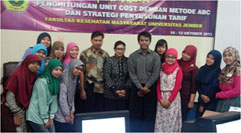 Ada banyak metode untuk menghitung unit cost pelayanan di RS. Masing-masing metode memiliki kelebihan dan kekurangan. Namun yang terpenting adalah bagaimana tim Penghitungan Unit Cost di RS mampu menggunakan salah satu metode yang paling dikuasainya dengan tepat. Hal ini dilakukan untuk menghasilkan informasi biaya satuan pelayanan. Informasi ini menjadi semakin penting dan tak dapat ditunda lagi karena UU BPJS akan segera berlaku. Penghitungan yang tepat akan memberikan gambaran bagi manajemen RS mengenai komposisi dan besarnya biaya pelayanan. Informasi ini tentunya dapat digunakan lebih lanjut untuk, salah satunya, mengendalikan biaya agar terjadi efisiensi yang optimal. Selain itu, bagi RSUD yang sudah menerapkan BLUD, maka mau tidak mau penetapan tarif pelayanan menggunakan unit cost sebagai dasar penetapan tarifnya. Diantara berbagai metode penghitungan yang berkembang, ABC adalah satu metode yang dianggap sangat sulit diterapkan. Padahal metode ini cukup mampu menggambarkan biaya, karena dihitung berdasarkan aktivitas. Dengan demikian, metode ini sangat cocok diterapkan diera BPJS. Minggu lalu telah berlangsung pelatihan penghitungan unit cost pelayanan RS yang materi dan referensinya dapat Anda simak
Ada banyak metode untuk menghitung unit cost pelayanan di RS. Masing-masing metode memiliki kelebihan dan kekurangan. Namun yang terpenting adalah bagaimana tim Penghitungan Unit Cost di RS mampu menggunakan salah satu metode yang paling dikuasainya dengan tepat. Hal ini dilakukan untuk menghasilkan informasi biaya satuan pelayanan. Informasi ini menjadi semakin penting dan tak dapat ditunda lagi karena UU BPJS akan segera berlaku. Penghitungan yang tepat akan memberikan gambaran bagi manajemen RS mengenai komposisi dan besarnya biaya pelayanan. Informasi ini tentunya dapat digunakan lebih lanjut untuk, salah satunya, mengendalikan biaya agar terjadi efisiensi yang optimal. Selain itu, bagi RSUD yang sudah menerapkan BLUD, maka mau tidak mau penetapan tarif pelayanan menggunakan unit cost sebagai dasar penetapan tarifnya. Diantara berbagai metode penghitungan yang berkembang, ABC adalah satu metode yang dianggap sangat sulit diterapkan. Padahal metode ini cukup mampu menggambarkan biaya, karena dihitung berdasarkan aktivitas. Dengan demikian, metode ini sangat cocok diterapkan diera BPJS. Minggu lalu telah berlangsung pelatihan penghitungan unit cost pelayanan RS yang materi dan referensinya dapat Anda simak 





